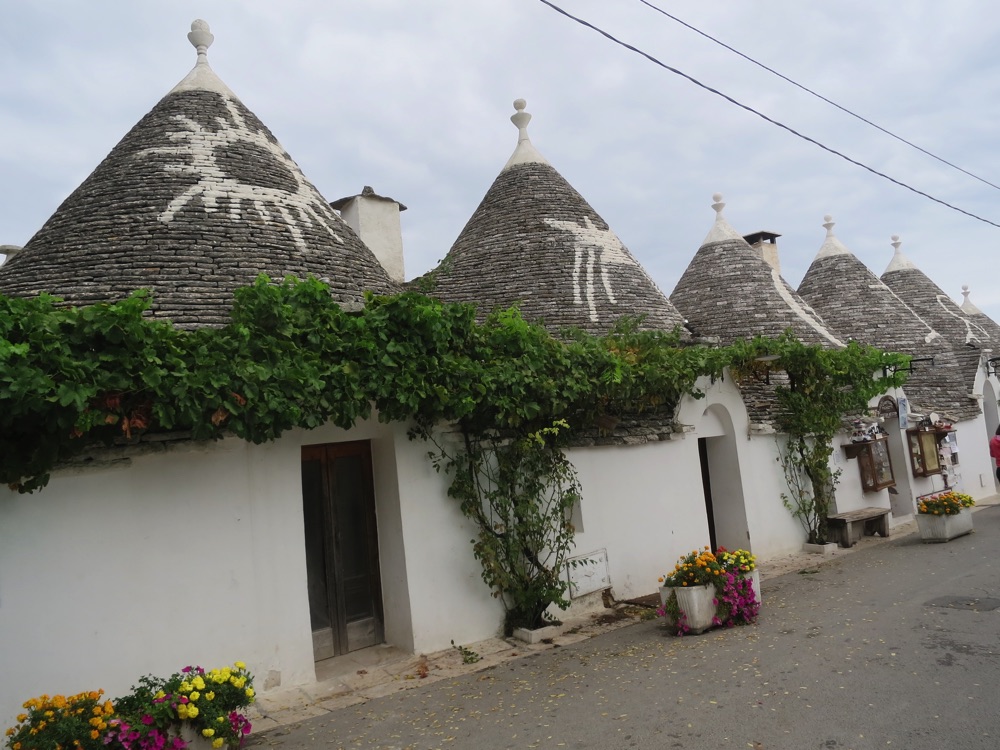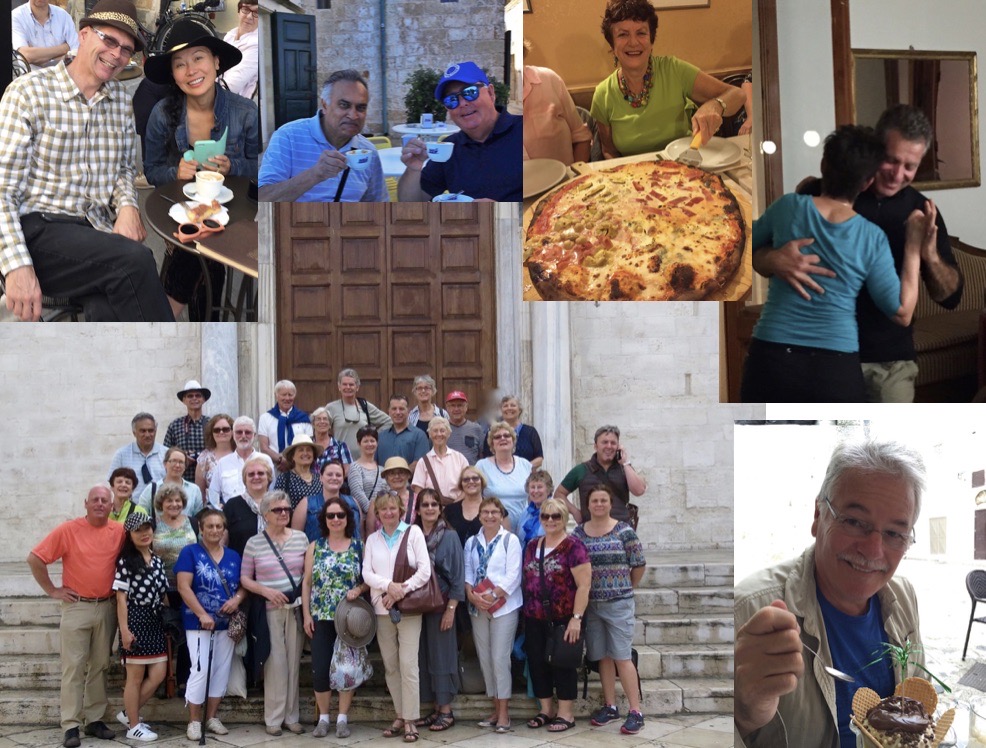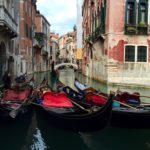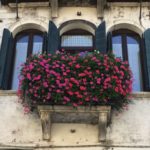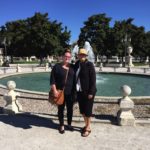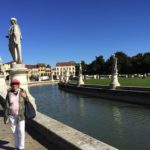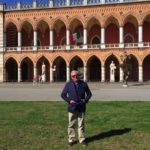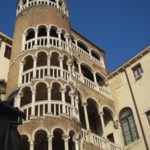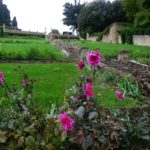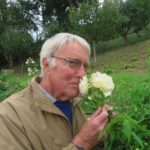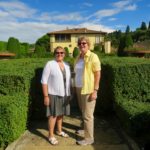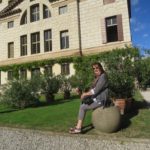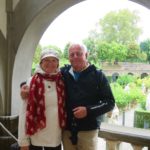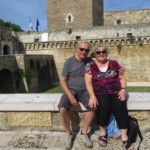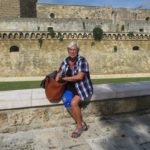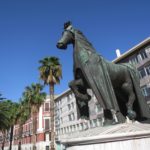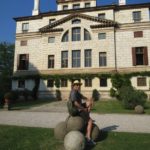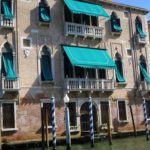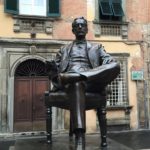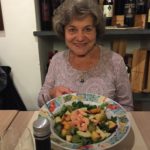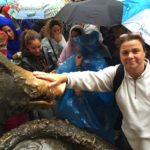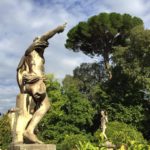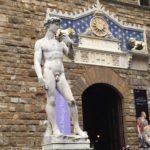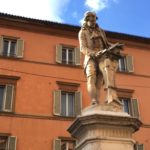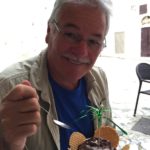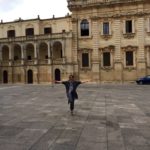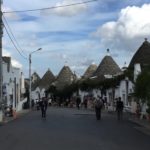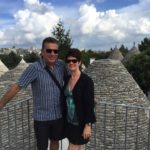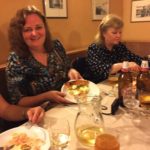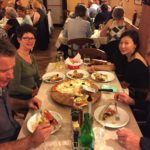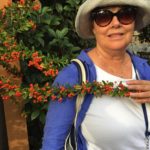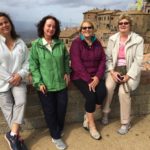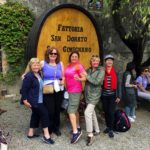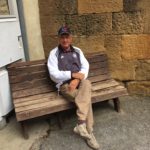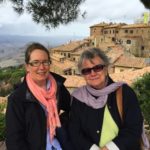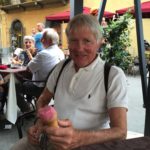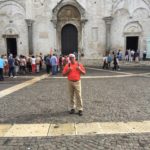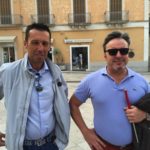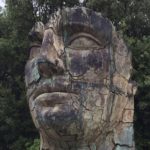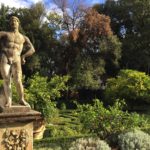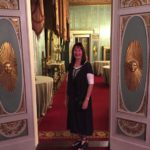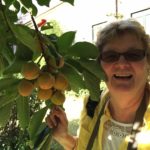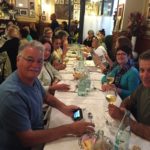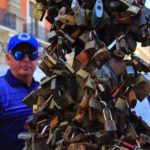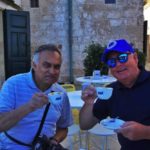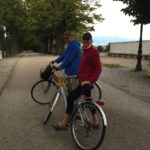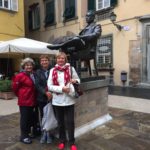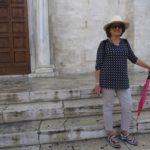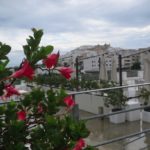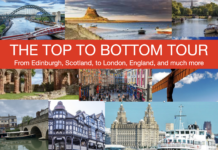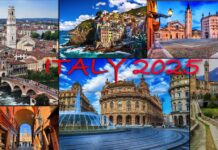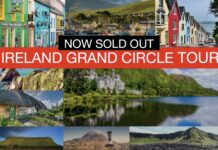On Sept 26, I arrived back in Venice for the second Italy – Puglia Tour after the first of the two back-to-back tours concluded in Ostuni, Puglia.
It was a strange feeling arriving back in Venice to start the same tour again. But there were differences.
Firstly, we were not in the same hotel. This time we were located on Calle Buccari at the eastern end of the city on Isola di Sant ‘Elena.

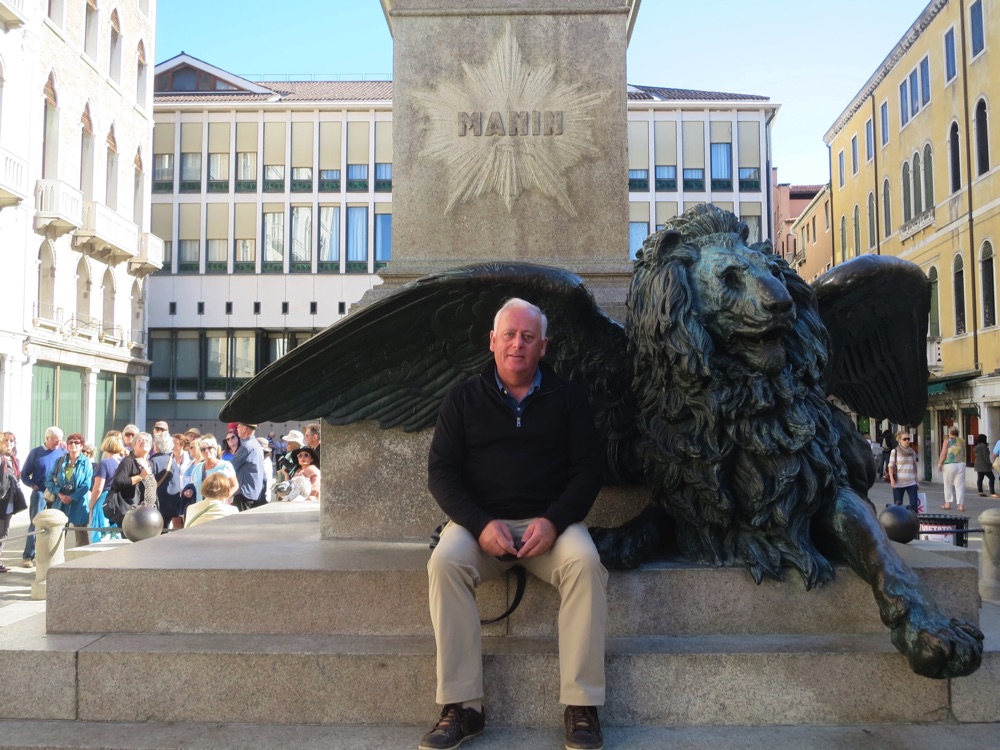
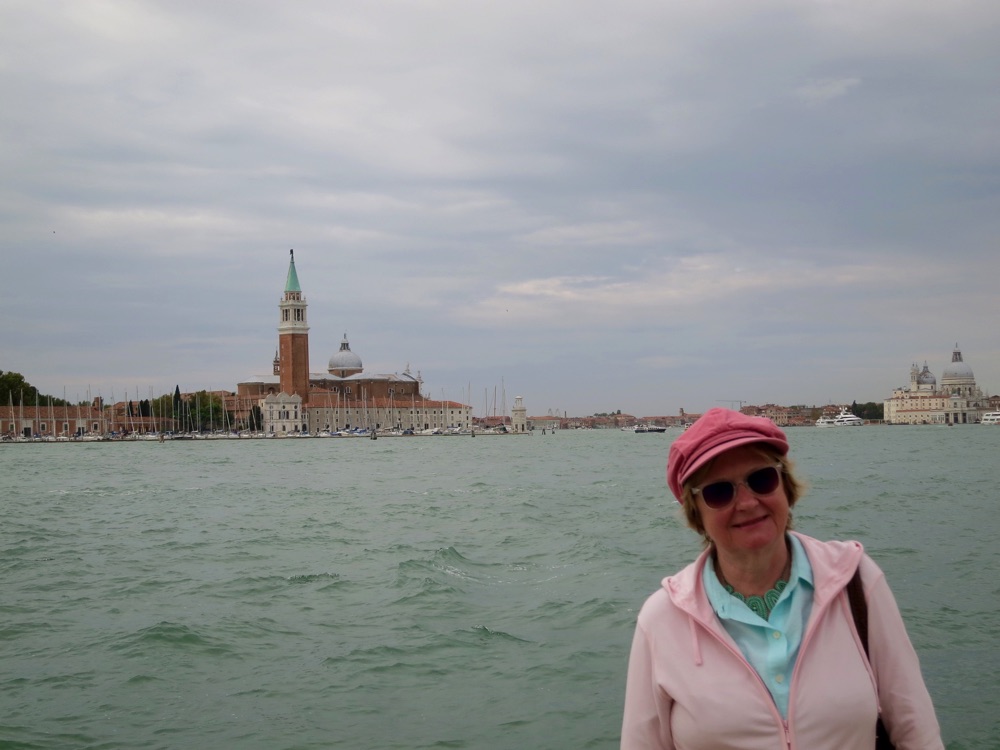
At first, I thought this might be too far out of town, but it turned out to be wonderful, with an easy stroll path through the park-lake waterfront setting into San Marco. It gave us a fresh new perspective on Venice with views we never had seen before of Isola di san Giorgio Maggiore and Basilica di Santa Maria della Salute.
At night, we took a boat ride into town which was also a new experience and it was a very charming way to arrive for a night out in the city. Walking home on a starlit night along the waterfront was also very romantic and memorable.
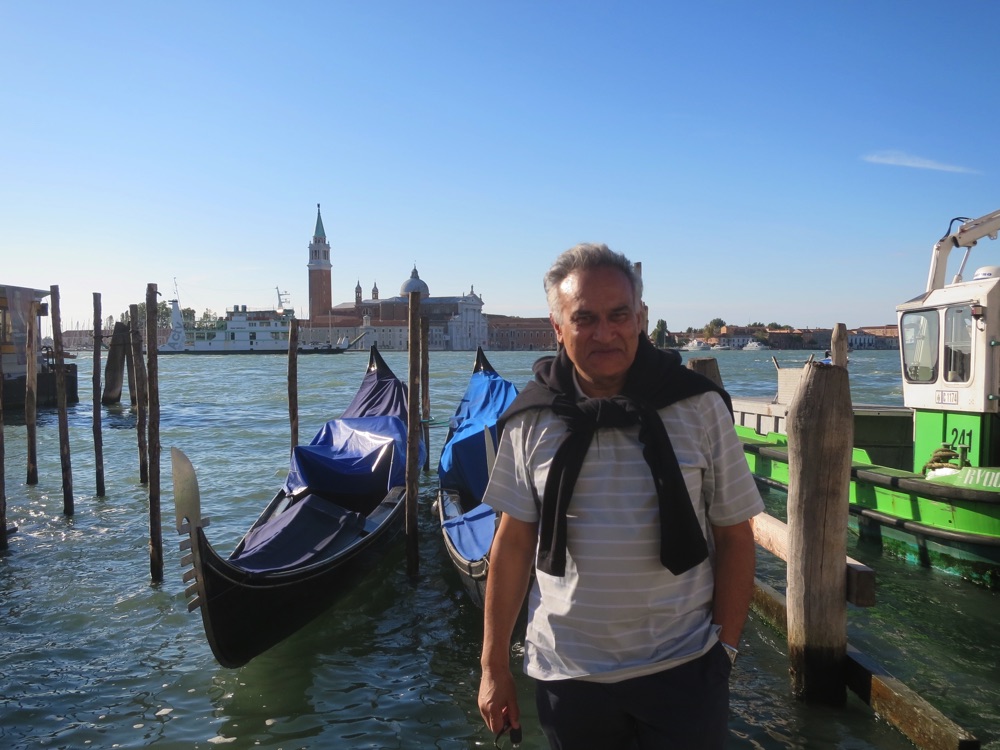
The weather always seems to be perfect for our tours and it was just as warm with beautiful clear skies for our walking tour of the town and trip out to Villa Malcontenta.
We were pleased that Piazza San Marco was not flooded and we were still able to sit outside at night and enjoy the music and Prosecco.
From Venice, we again travelled to Padua, only this time we made the visit to St Anthony’s Basilica optional. Some people preferred to shop or go for coffee instead of seeing the bones of the saint. Our stop in Padua was never the less a delight and we next moved on to Bologna where we again had a superb lunch at one of the city’s great restaurants.
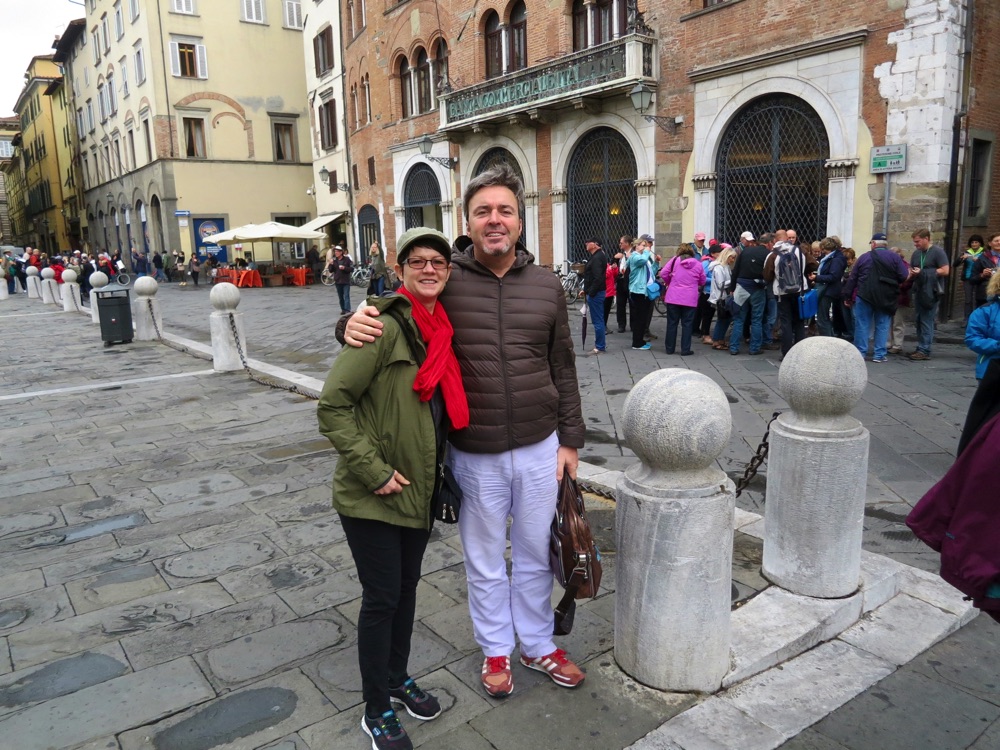
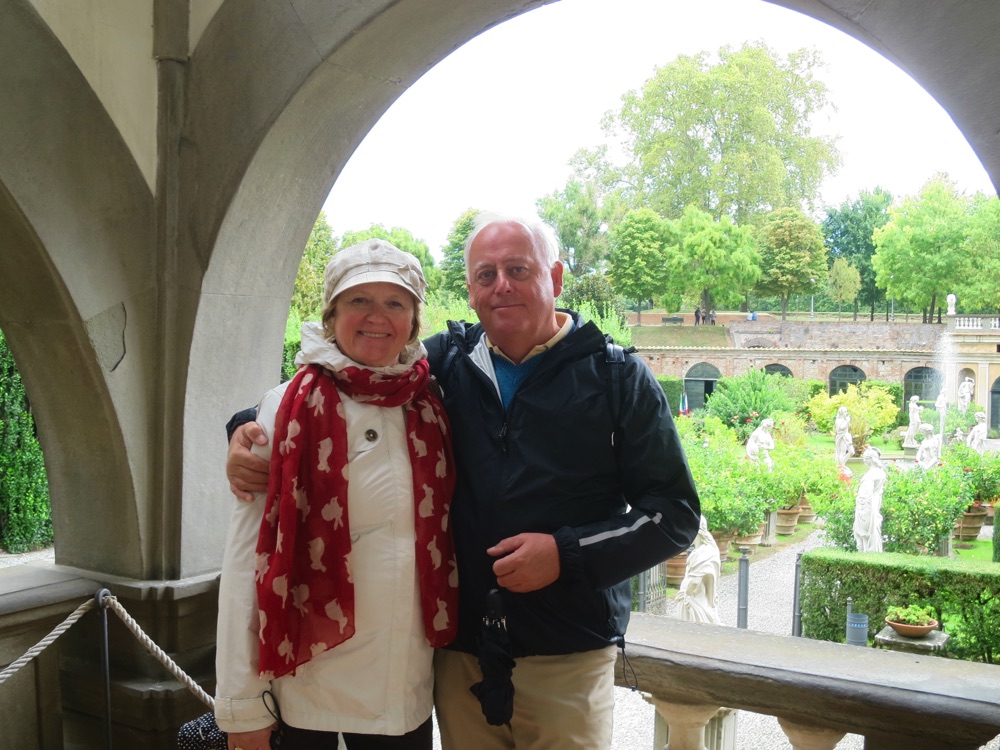
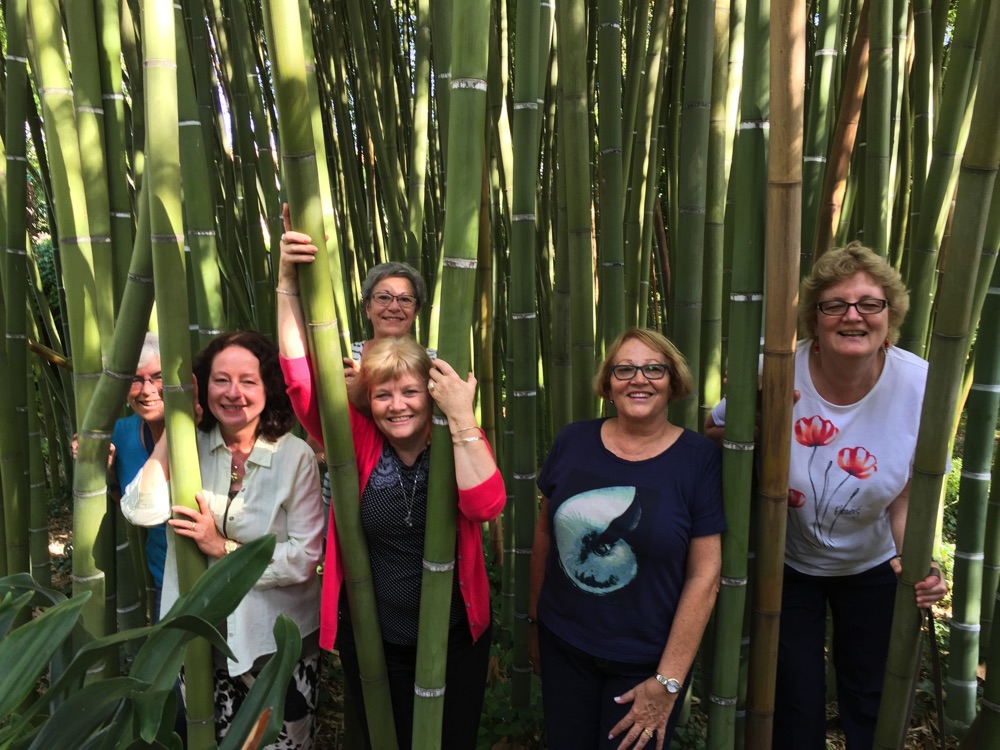
This time, we were close enough to the centre square to do some shopping in the market and local shops.
From Bologna, we headed on to Florence, where we checked into a different hotel, just around the corner from the one the first group had.
For our free day in Florence, I offered to take people on a personal guided tour of the Boboli and adjoining Bardini gardens.
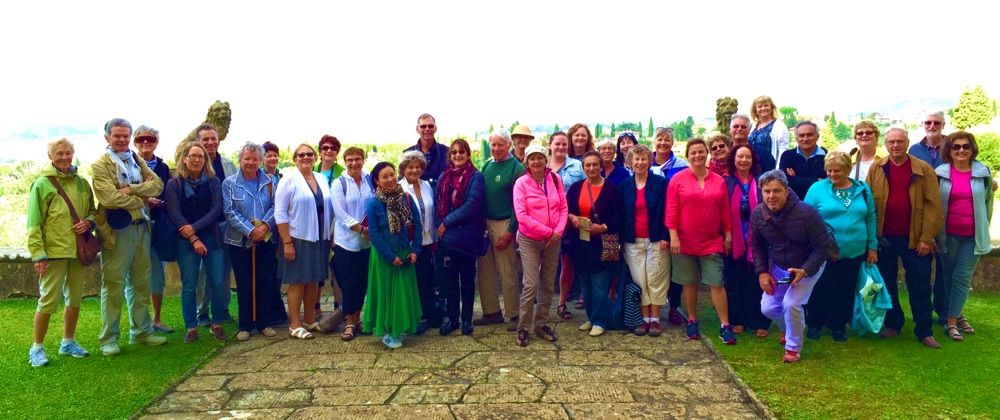
At the Boboli, we walked past the amphitheatre behind the Pitti Palace and went directly to the “isolotto” with its island of citrus trees in pots and then made our way up the main axis or cypress alley, the viottolone, to reach the Garden of the Cavalier with its porcelain museum and panoramic views of the surrounding countryside.
From here, we crossed over into the Bardini garden, a beautifully restored Renaissance garden, and wandered past its superb loggia offering spectacular views over the city.
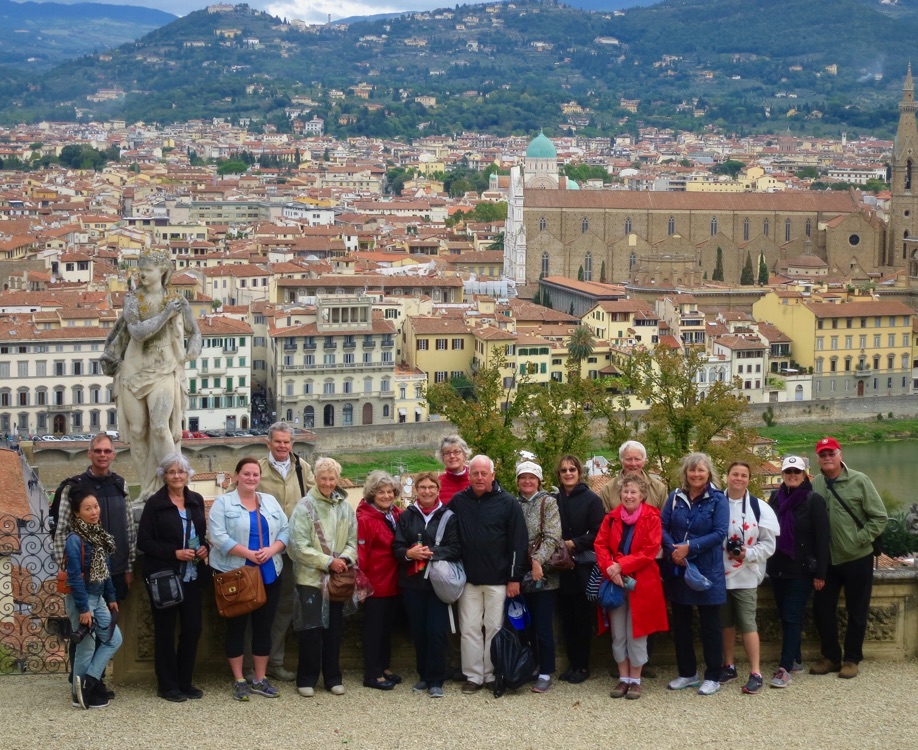
We then wandered down through a series of terraces, still full of roses in bloom, and emptied back into the city via the Ponte Vecchio over the Arno River.
This little tour turned out to be very successful and we got to see Florence from the terrace at Bardini and then walk down to the foot of the Ponte Vecchio where we bought ice creams from the shop that claimed to be Italy’s original gelato shop.
From Florence, we again went to Lucca to see Palazzo Pfanner and the beautiful cathedral and to walk the famous city walls.
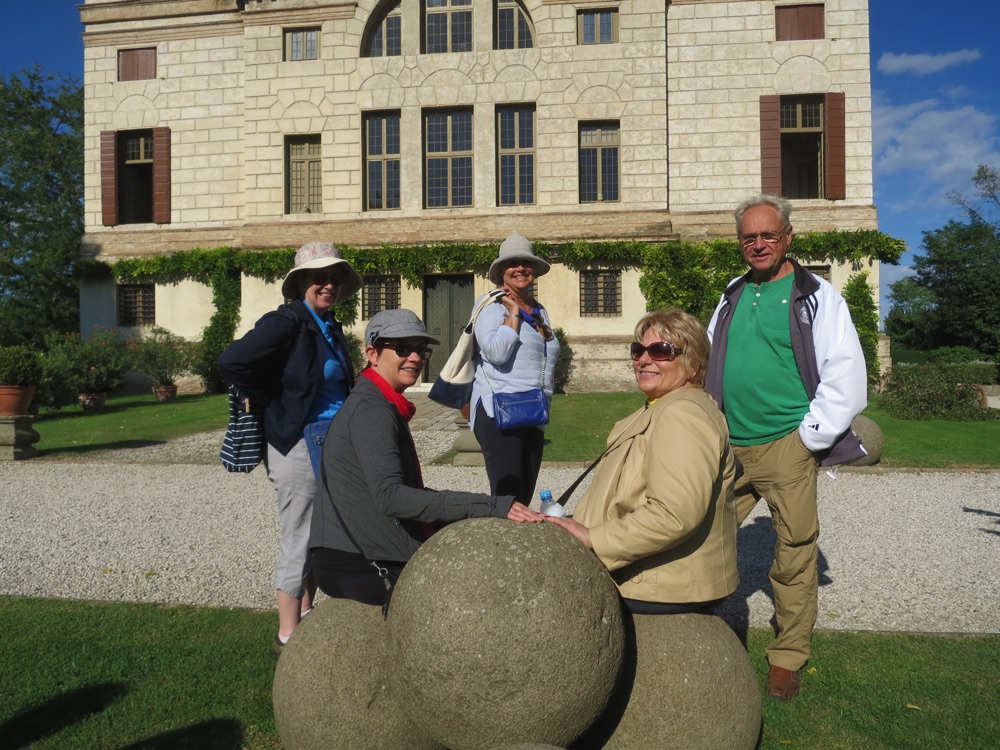
Here, we again found fabulous restaurants and shops and had a lot of fun exploring the cafes and bars.
Palazzo Pfanner dates back to the 1660s and is another excellent example of a Renaissance garden with lots of orange and lemon trees in large terracotta pots, statuary, fountains and clearly focused avenues and vistas and framed views.
In Lucca, some of my group visited churches in the Romanesque style, including the San Michele in the centre of town. In here, we found the beautiful painting of the Four Saints by Fra Filippo Lippi.
In the evening, we went to a local farm for a typical Tuscan supper with music and dancing. It was a fun party with a never ending supply of very good wines. There is never a shortage of things to do and see in Florence. We again had great fun visiting the iconic gardens of Villa Gamberaia in Settignano and the beautiful city garden of Corsini al Prato next to the railway station.
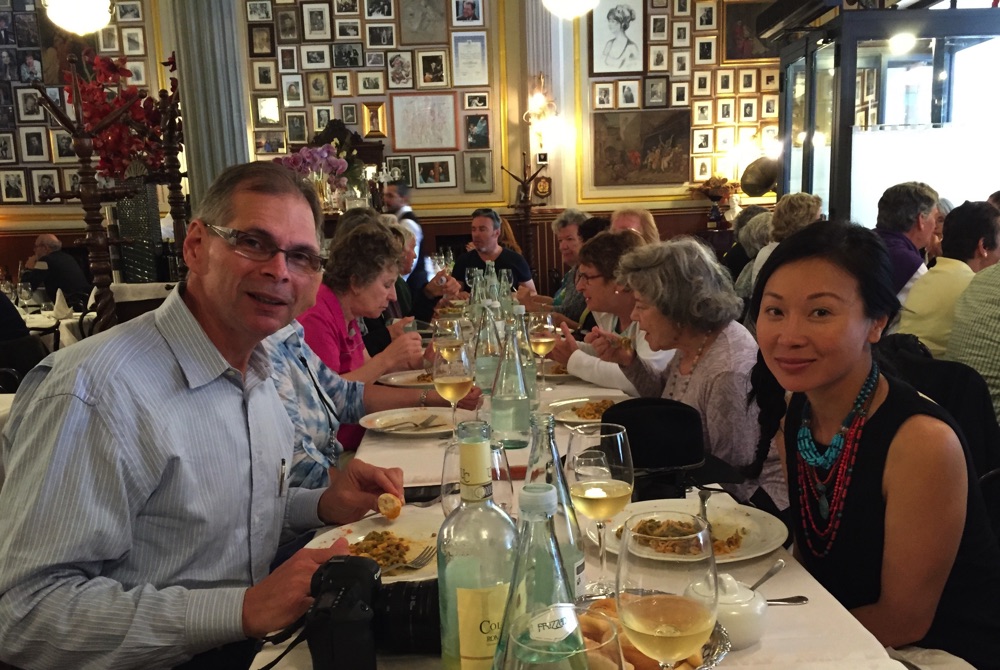
In Settignano, we not only enjoyed the pretty village but learned that it was there that Michelangelo lived with stonecutters as a boy and first learned to use a hammer and chisel.
Villa Gamberaia was once owned by a Romanian princess, Jeanne Ghyka, who was well known for her eccentric personality. She apparently removed all the mirrors from the rooms of the villa, always hid her face behind a veil and was the talk of the village for stepping into the garden at night to lower herself naked into the mirror ponds by moonlight.
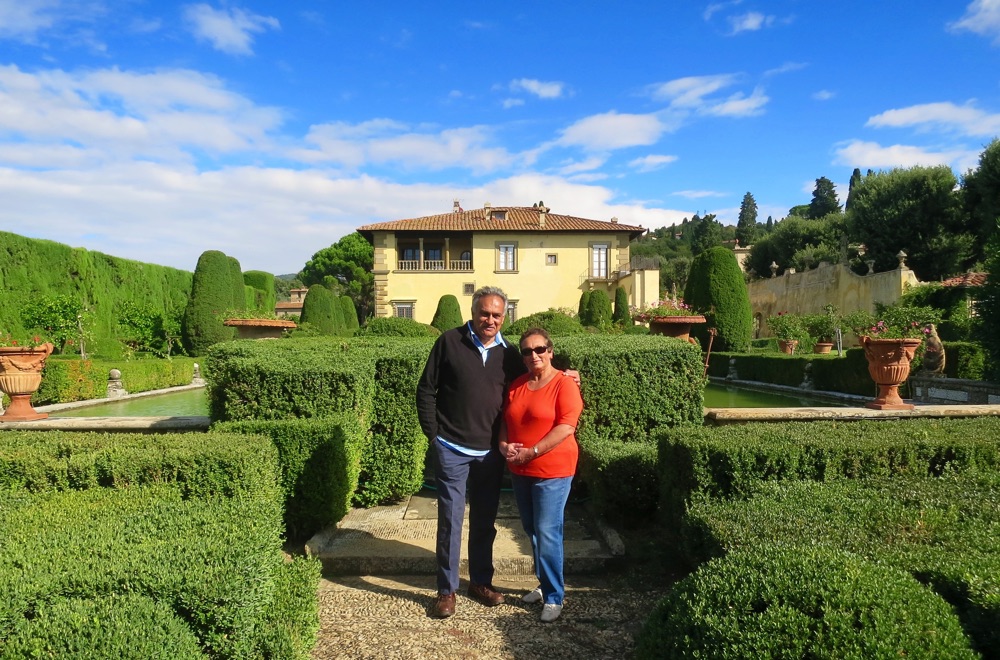
Over the centuries, Villa Gamberaia has been visited and written about by numerous poets, garden designers and commentators, including American novelist Edith Wharton in 1904 in her book, Italian Villas and their Gardens.
British writer Harold Acton is famous for having said this about the garden: “Nowhere else in my recollection have the liquid and solid been blended with such refinement on a scale that is human yet grand without pomposity… It leaves an enduring impression of serenity, dignity and blithe repose.”
Down one side of the villa is a dramatic long green sweep of lawn known as the “bowling green”. It runs from one end of the garden to the other and creates the impression that the garden is sailing like a ship through space

At Giardino Corsini al Prato, we were fortunate to be greeted by both Prince Filippo and Princess Giorgiana Corsini, who are long-established members of the Italian aristocracy.
In the warm afternoon light, the garden looked especially enchanting with its persimmon and orange trees burgeoning with fruit, elegant embroidery parterres, clouds of blue plumbago and impressive rows of 2nd century statuary.
Back at our hotel, we learned movie stars were staying there the week before for a special fund-raising event at which Sharon Stone and many other celebrities were present, so it added a little buzz of excitement. From Florence, we moved to Siena, staying in the same lovely hotel overlooking the city.
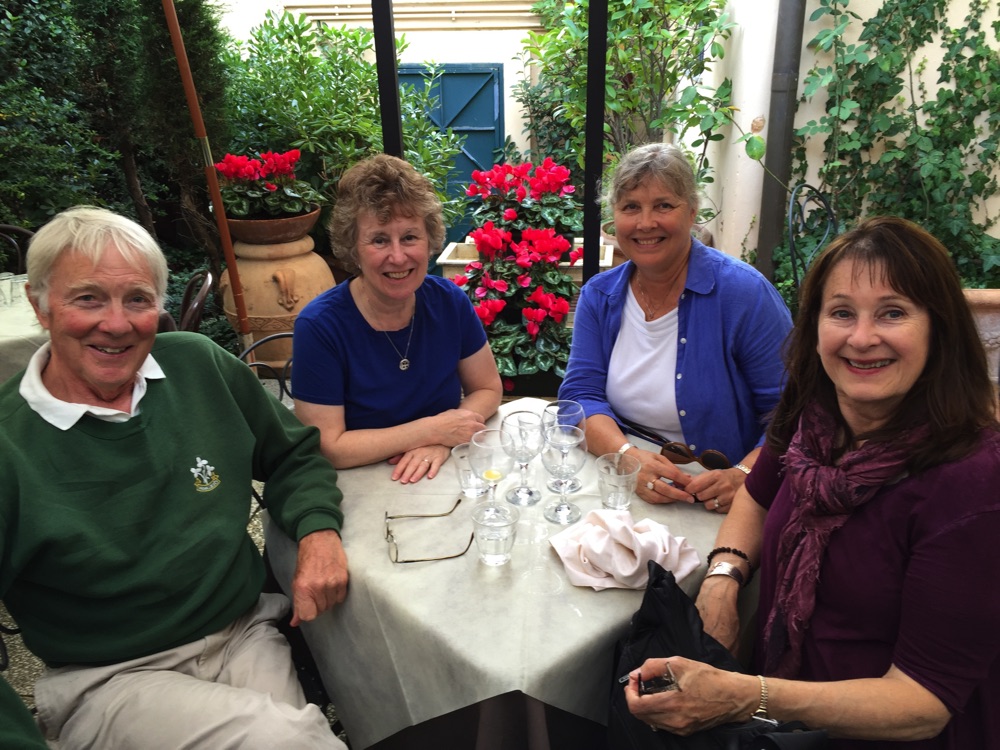
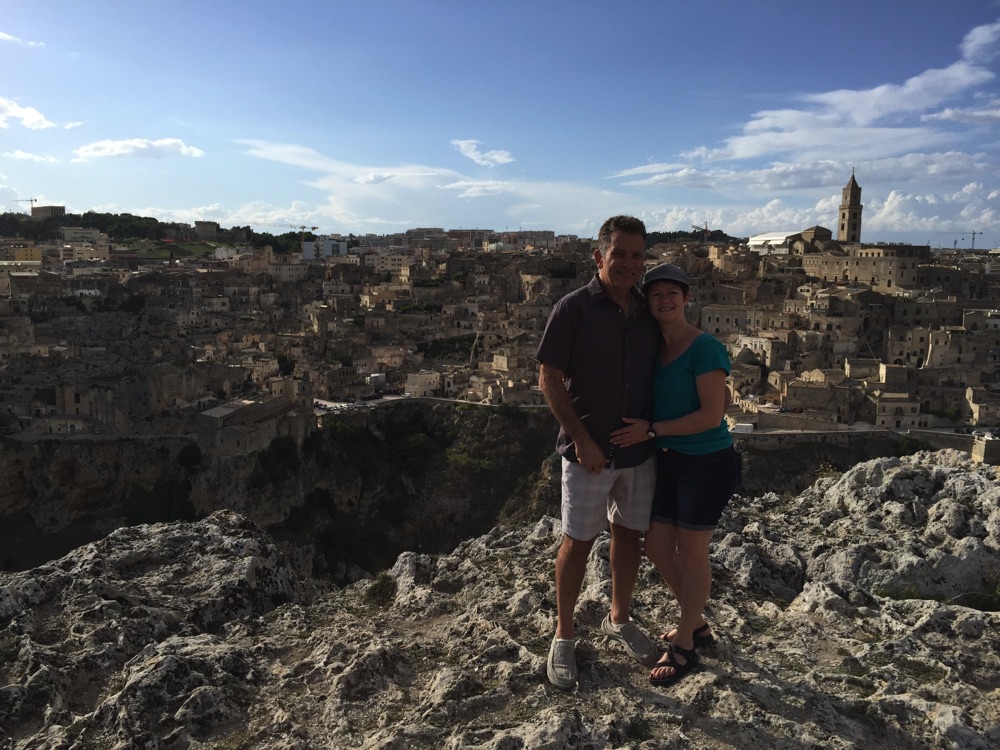
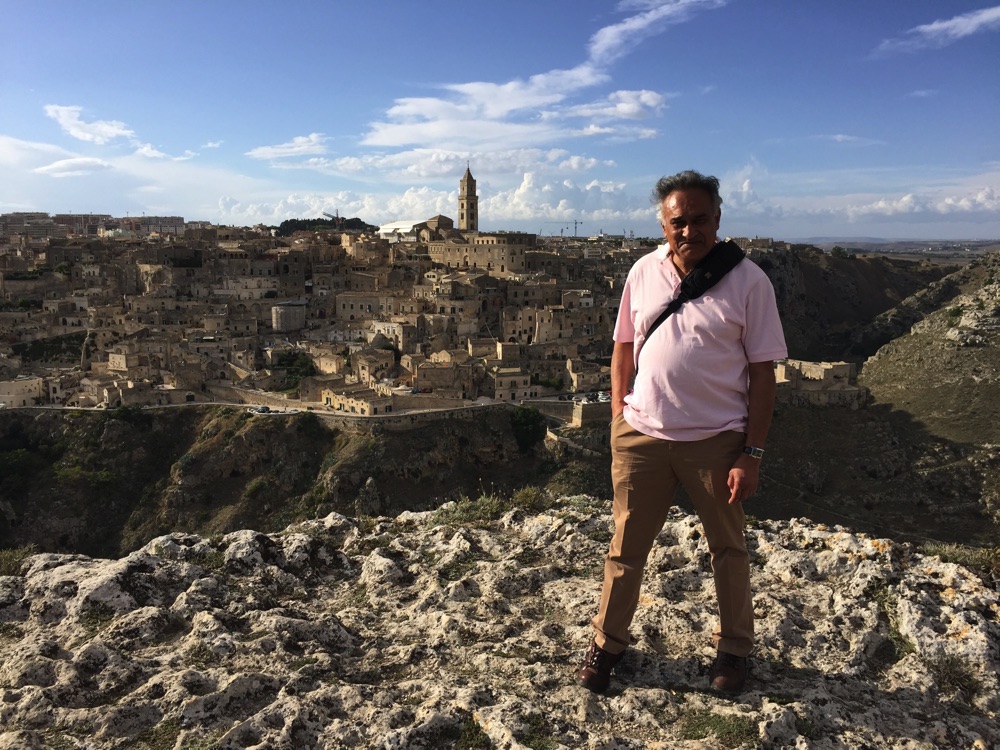
From here we visited San Gimignano and Volterra and got to know all the best parts of Siena before moving on to Pisa.
In Pisa, we again visited the botanical garden and the field of miracles and got to climb to the top of the Leaning Tower and wandered into the cathedral and the baptistry.
The great thing about Italy – wherever you are in the country – is that you are usually only ten steps in any direction from great food and wine and fabulous shopping. It really is amazing how this has been accomplished but it is one of the reasons this country is my favourite and why I cannot resist the urge to keep returning again and again to discover more of its extraordinary beauty and hospitality.

From Pisa we flew to Bari and travelled down the coast again to Lecce from where we visited La Cutura, the rustic, country botanic garden that had been cared for by the same Italian family for generations.
There, we again saw wonderful examples of tropical plants, some from Africa, South America and Mexico, as well as all the classic, popular Italian flora of oleanders, rosemary, agave, bougainvillea, stone pines, evergreen oaks, olive and citrus trees.
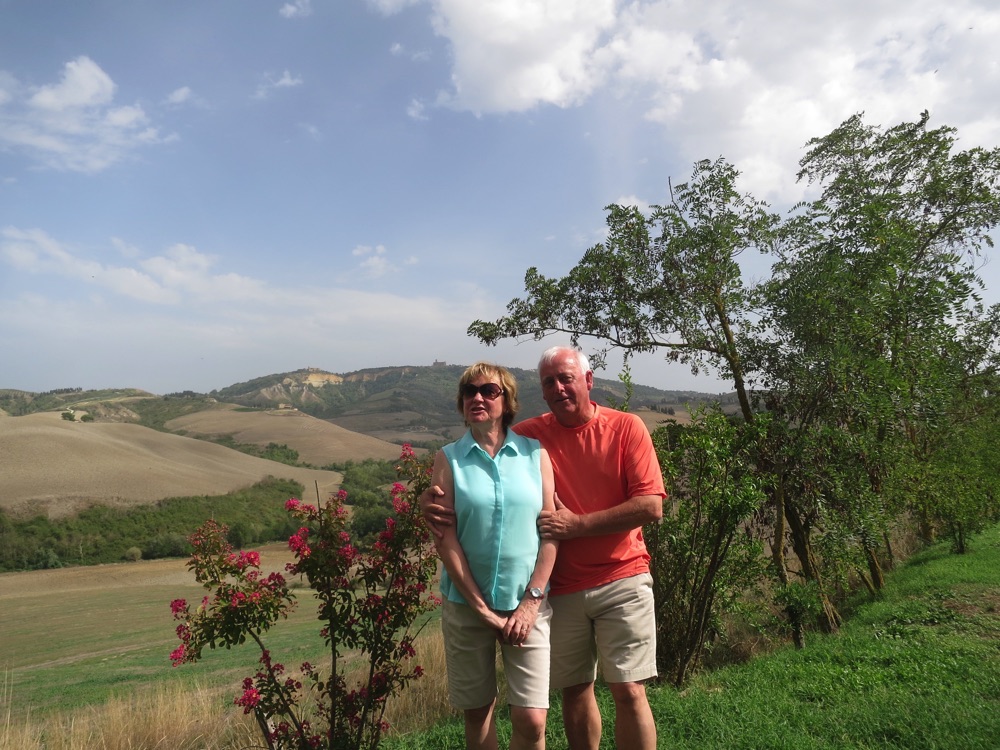
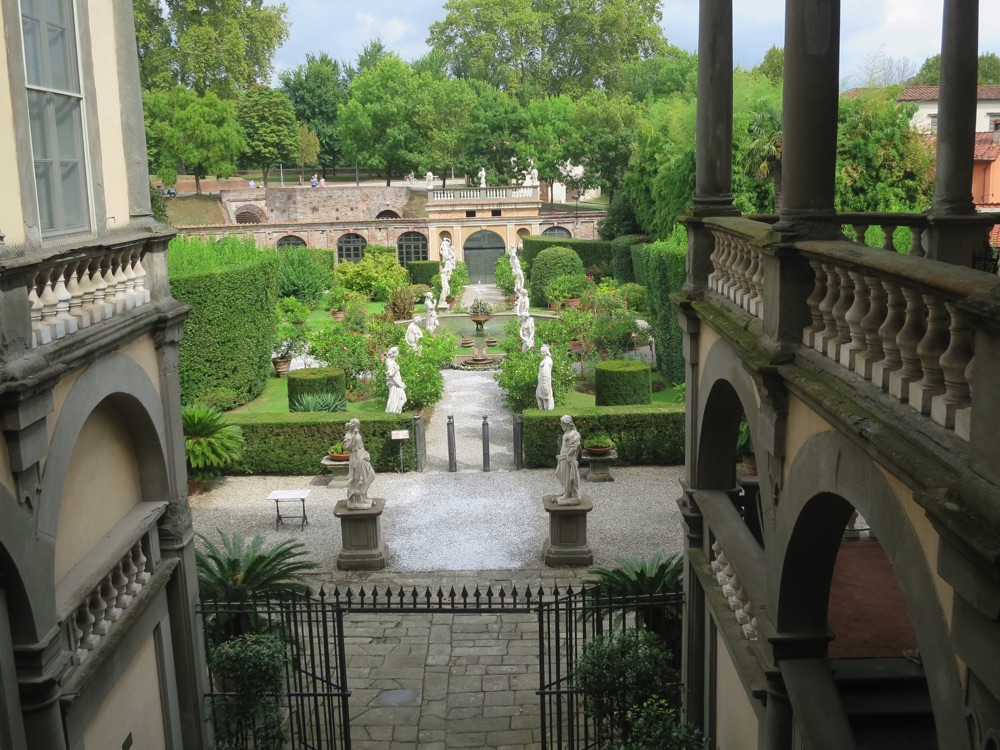
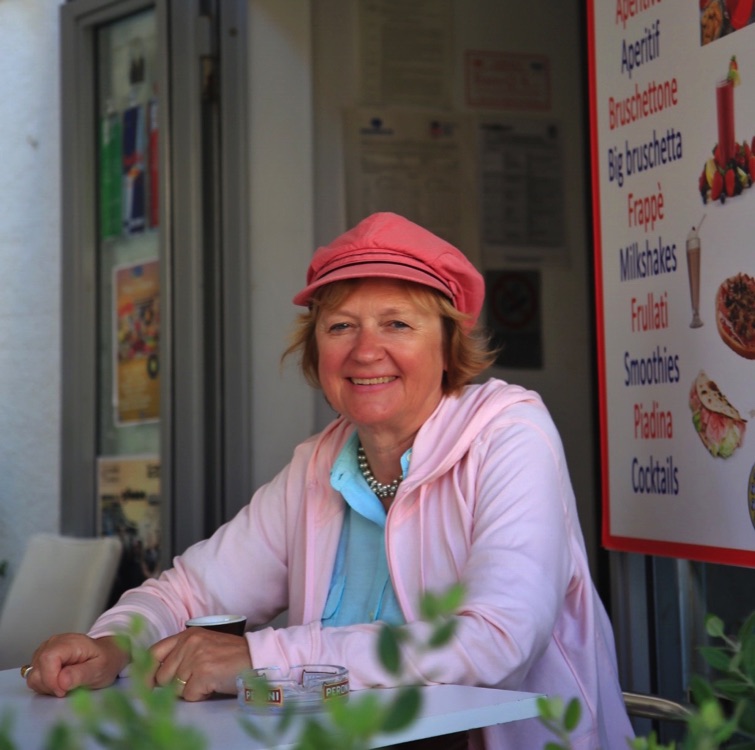
From Lecce, we visited Matera in Basilicata and the marble streets of Locorotondo. I found amazingly resilient plants being grown in pots in courtyards and on sun-soaked balconies, even out of stonewalls and on exposed rocky outcrops. In every case, an attractive garden space was created where many would have said no garden was possible.
